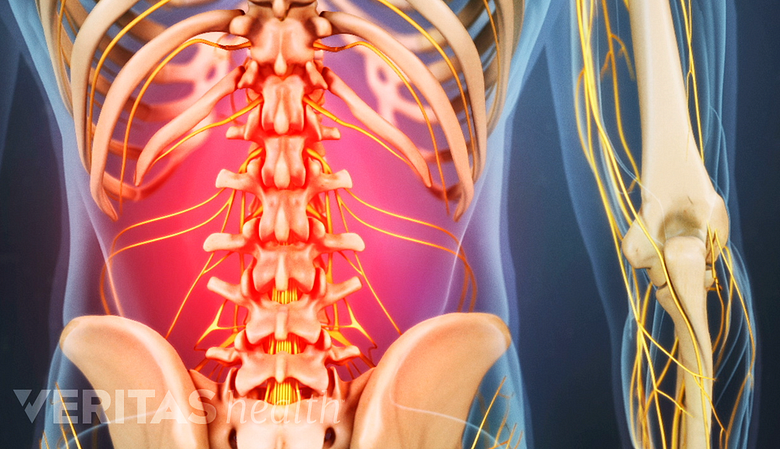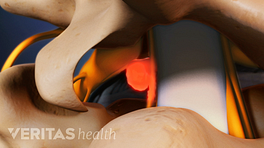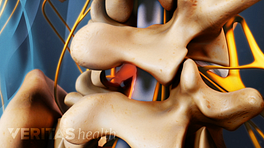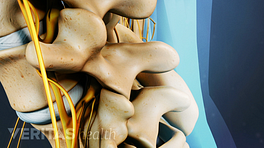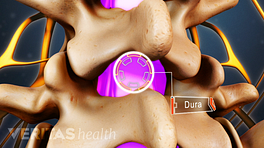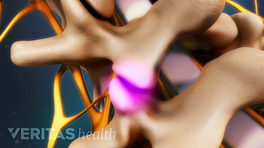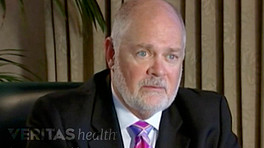A lumbar microdiscectomy surgery is typically performed to alleviate the symptoms and signs of sciatica in the lower back and leg caused by a lumbar disc herniation. The goal of this surgery is to improve leg pain, restore function, and enable a return to normal daily activities. While it is hoped that any accompanying back pain will also be improved or resolved, the surgery is typically most successful at eliminating leg pain.
While different spine surgeons recommend somewhat different approaches to postoperative care after this type of surgery, several general aspects of recovery can be expected.
This article describes the various stages of recovery after lumbar microdiscectomy, what to expect during these stages, and the general guidelines of postoperative pain management.
In This Article:
- Postoperative Care for Lumbar Microdiscectomy Surgery
- Lumbar Microdiscectomy Recovery: Discharge to 14 Days
- Lumbar Microdiscectomy Recovery: Weeks 2 to 6
- Lumbar Microdiscectomy Recovery: Weeks 6 to 12
- Pain Management After Microdiscectomy Surgery
Lumbar Microdiscectomy Recovery Time
During the first few days after surgery, lower back pain can be intense.
Most lumbar microdiscectomy patients are able to go home from the hospital a few hours after the surgery. The traditional approach to recovering from lumbar microdiscectomy has been to limit bending, lifting, or twisting for a minimum of 6 weeks in order to prevent the disc from herniating again.
Learn How Microdiscectomy Surgery Is Performed
While many doctors restrict too much activity for the first 6 weeks, limited research suggests that restricting activities for 2 weeks following lumbar microdiscectomy may be sufficient for many patients. 1 Bono CM, Leonard DA, Cha TD et al. The effect of short (2-weeks) versus long (6-weeks) post-operative restrictions following lumbar discectomy: a prospective randomized control trial. Eur Spine J. 2017;26(3):905-12. doi: 10.1007/s00586-016-4821-9
- Driving and light activities can typically be resumed after about 2 weeks.
- Routine activities, such as work, school, and/or hobbies may be resumed within 6 weeks.
- Strenuous labor or contact sports may be recommenced after 12 weeks or longer.
Pain and fatigue are typically severe during the first few days after a lumbar microdiscectomy. During the initial days at home, it is important for someone to be there to help with basics, such as cooking and household chores. If the patient lives alone, having a friend, relative, or hired aide to stay close can be of considerable help.
It is important to plan ahead and prepare alternatives to common daily activities before your surgery. Examples of specific activities that may be completed prior to surgery include shopping for groceries, running errands, taking care of household chores, such as doing laundry and changing bed sheets, etc. Keeping a multi-purpose grabber tool handy can be helpful to avoid reaching and bending movements after the surgery.
Factors That May Slow Down Recovery
Lumbar microdiscectomy surgery is less likely to be successful due to delayed healing caused by one or more of these factors:
- Too much activity, such as lifting heavy items or pushing through fatigue, may lead to increased pain or reinjury that requires additional treatment.
- Not caring for the incision site during the early recovery period and engaging in restricted activities, such as swimming or taking a bath, could cause the incision site to become infected.
- Staying sedentary and not walking enough can cause muscles to weaken further and prolong pain and stiffness following the surgery. Staying too sedentary may also contribute to problems with digestion, sleep, and/or mood. Most surgeons recommend taking short walks during the first few days following microdiscectomy surgery, then gradually build up from there.
- Not adhering to the medication plan can lead to inadequate pain relief, complications, and delayed recovery. If the prescribed medication is not working or causing side effects, ask the surgeon if there are any other options. It is important to let the surgeon know about all medications and supplements.
- Having diabetes or other chronic diseases may slow healing and recovery. Limited research suggests that people with diabetes are at an increased risk for complications following this procedure. 2 Viswanathan VK, Shanmuganathan R, Aiver SN, Kanna R, Shetty AP. Factors affecting early and 1-year motor recovery following lumbar microdiscectomy in patients with lumbar disc herniation: a prospective cohort review. 2019; 13(1):135-45. doi: 10.31616/asj.2018.0111
Other health factors that may slow down recovery time include malnutrition or overall poor health.
The lumbar microdiscectomy surgery technique and procedure have significantly improved in recent years with a shorter recovery period, less pain, and a higher success rate. Caring for the incision site, lower back, and maintaining good health and can have a considerable effect on the overall success of the surgery.
See Microdiscectomy Spine Surgery: Risks, Complications, and Success Rates
- 1 Bono CM, Leonard DA, Cha TD et al. The effect of short (2-weeks) versus long (6-weeks) post-operative restrictions following lumbar discectomy: a prospective randomized control trial. Eur Spine J. 2017;26(3):905-12. doi: 10.1007/s00586-016-4821-9
- 2 Viswanathan VK, Shanmuganathan R, Aiver SN, Kanna R, Shetty AP. Factors affecting early and 1-year motor recovery following lumbar microdiscectomy in patients with lumbar disc herniation: a prospective cohort review. 2019; 13(1):135-45. doi: 10.31616/asj.2018.0111

